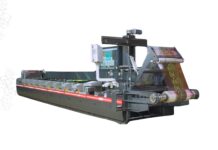According to the latest report published by Research Report Insights, the worldwide flexible packaging market is anticipated to record a CAGR of 6.7% throughout the projected period of 2017-2022. The overall market is also expected to account for a market value of approximately US$ 202 billion through the end of the projected the year 2022.
Whilst one of the quickest developing segments of the packaging business, flexible packaging blends the best characteristics of plastic to get a wide array of protective properties while utilizing at least material. Flexible packaging is characterized as any package or any piece of a package whose shape can be promptly changed to the form of a sachet and pouch, bag, film and overwrap, tube, or liner.
Flexible packages are utilized in industrial usage, to safeguard, market and disperse an immense range of products as well as for customers and institutional products. It utilizes fewer raw materials to conserve resources, is lightweight yet firm enough to hold a big measure of products and is light to carry.
Directing the path in packaging improvement, flexible packaging adds marketability and value to the products. From securing extended shelf life and food safety to offering even barrier protection, heating, resealability, ease of use and outstanding printability, the industry is likely to continue to boost at an unprecedented pace in the coming years.
Flexible plastic packaging results in a lesser amount of consumer waste as it utilizes less energy in production and transportation, and renders smaller measures of greenhouse gases on its direction to the market. Made from BOPP, BOPET, cast polypropylene, polyethylene, polypropylene, polyamide, ethylene vinyl alcohol, polyvinyl chloride and polystyrene, it also provides dispensing and reclosure alternatives, making it easier to store and transport or carry. Plastic packaging now offers and enables content visibility that creates shelf appeal. It also offers the ineffective product to package ratios. The flexible plastic packagings are broadly used in personal care products, tobacco products, food and beverages, pharmaceuticals, industrial and institutional products.
The worldwide market for flexible plastic packaging is expected to witness a strong growth as a result of a number of drivers influencing it, such as rising demand from the pharmaceutical and food & beverage industry, increase in middle-class population, increasing preference of handling and convenient packaging and growing implementation of plastic flexible packaging. These aspects are fueling the expansion of the global market of flexible plastic packaging.












